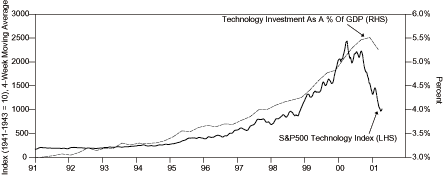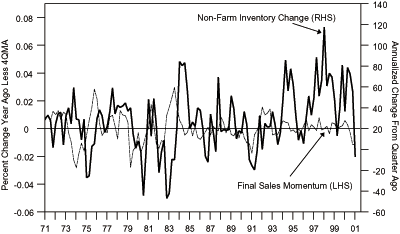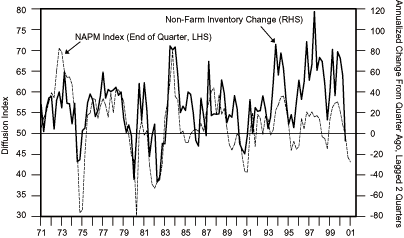Chin Wagging, Secularly
It is with trepidation that I take pencil to paper this month. Not that I ain’t got something to say. I’ve been accused of many things, but that is not one of them! Rather, my hesitancy stems from the fact that PIMCO will hold its nineteenth (or is that twentieth, Jim Muzzy?) Secular Economic Forum next week. This confab is a sacred PIMCO tradition, involving all PIMCO Investment Professionals, and lies at the heart of our investment philosophy: a long-term orientation, above and beyond the business cycle, aimed at identifying the powerful, even if glacially-slow, forces that determine the fate of economies and markets.
It’s a delicious mental torture chamber, made so by the sheer power of the business cycle that is always in our face. We force ourselves to leave both the business cycle and our egos at the door, and think out loud together for three days, a process turbo-charged with outstanding guest lecturers. This year’s gathering promises to be an electric affair, even if the lights go out, with energy coming from a who’s who roster of guests and PIMCO’s never-shy debaters.
We will, no doubt, but for only a few minutes I’m certain, congratulate ourselves for how smart we were at last year’s Secular Forum , brilliantly summarized in Bill Gross’ June/July 2000 Investment Outlook : “Survivor…(Red Sky in the Morning)”. 1 For me, one line from Bill’s missive said it best:
“…capitalism is subject to both over and under reach, even in Shangri-La. Recession is not just a four-letter word +5. It’s an inevitable outgrowth of Keynesian ‘animal spirits’.”
Inflated bubbles, borne of capitalist delusions of invincibility, were what we saw last year, and deflating bubbles were what we foresaw for the years ahead. And popping bubbles have been what we’ve witnessed over the last year. So, you see, a little self-applause will be in order. But only a little. ‘Cause now, we gotta contemplate secular Post Bubble Disorder (PBD), a condition none of us has experienced first hand (except, of course, our colleagues who will be joining us from Japan). As regular readers know, I have a few views of my own on PBD. I look forward to putting them on the Secular Forum grill, a white-hot crisper for sloppy thinking. More importantly, I look forward to shutting up and listening and learning, as I rarely say anything I don’t already know (or don’t know, some might argue).
Enough about the Secular Economic Forum . As always, Bill will be following up with an enlightening and entertaining epistle about what we thought and why we thought it; and what we plan to do, and equally important, not do with all that thinking. I have got a much smaller mission at the moment, which is to ruminate on why the Fed did what it did on April 18, cutting the Fed Funds rate to 4½% in a surprise inter-meeting move, just as conventional market wisdom had ruled it out (don’t you just love how Street economists are always ruling things in and out; does that mean they still work with rulers, or do they think they are rulers?). Ever since, the financial markets have been abuzz about what it was the Fed knew that we didn’t know, and when will that thing that we didn’t know bite us in the you know where?
If This Ain't a Double-Bubble, Get Me Glasses or Sue Me!
Figure 1
Source: Bloomberg and Bureau of Economic Analysis
It's Okay for the FOMC to Change Its Mind
In contrast to the conspiracy thesis crowd, I don’t think the Fed knew anything that we didn’t or don’t know. To the contrary, I think markets have been far more prescient than the Fed in diagnosing that the economy is suffering from PBD. Thus, I don’t see the Fed’s April 18 surprise as a harbinger of some nasty financial accident that only the Fed knows about, but rather as reflective of a change in the Fed’s thinking.
Up until April 18, the Fed had been telling a story in which the principal villain was the dark side of a manufacturing inventory cycle, in lagged response to a Fed tightening-induced (and OPEC turbo-charged) deceleration in aggregate demand. This story carried a happy V-shaped ending, as inventory corrections are, by definition, self-limiting if the central bank eases aggressively and successfully arrests the aggregate demand deceleration.
And, I hasten to add, there is nothing intrinsically wrong with this story. Indeed, we laid it out last September 2 in two simple, but exceedingly prescient models, borrowed from the archives of my years trafficking in Wall Street economics.
- Final sales momentum determines the “sustainable” pace of nonfarm inventory accumulation, as shown in Figure 2. If final sales momentum is decelerating but inventory accumulation is accelerating, you’ve got producers in denial, and a burgeoning inventory problem. That was precisely where the economy was last summer and fall, a clarion signal that the Fed’s 1999-2000 tightening cycle was “working”. In fact, it was “working” too well, implying a hitch in the git-along of future production.
- The National Association of Purchasing Management Index (PMI) is an outstanding leading indicator of changes in the pace of nonfarm inventory accumulation, as shown in Figure 3. No surprise here, really, as purchasing managers are the first to feel knots in their inventory briefs, and the PMI, as a diffusion index of sentiment, captures that pinch in the panties very well. And last fall, purchasing managers were screaming pain.
That was then, and it implied a reversal from Fed tightening to Fed easing; it wasn’t a matter of direction, but timing. We thought the Fed would be a bit tardy on the timing, as Mr. Greenspan would want to devalue the notion that he stood ready to underwrite the downside for stocks, a notion known as the Greenspan Put. 3 Put differently, we thought that Greenspan would let nasty economic data call the timing and magnitude of the reversal to easing, rather than nasty stock price action, even though nasty stock price action could be rationally taken as a harbinger of nasty economic data to come. Essentially, we thought, Greenspan would want to stick stock speculators’ noses into the red ink of their own folly.
And indeed, that was the modus operandi that Greenspan displayed in “managing” the turn to Fed easing. He whistled while stocks fell in December, merely shifting from a bias to tighten to a bias to ease at the December 19, 2000 FOMC meeting. He then surprised with a 50 basis points off-meeting ease on January 3, 2001. But it was one day after the release of economic data that stunk up the joint (the PMI falling below 45, the historical threshold for economy-wide recession!) The next 50 basis point ease at the January 31 meeting was a fait accompli given the unfolding smelly data, and surprised nobody. And the 50 basis point ease at the March 20 FOMC was downright stingy, given that incoming data, notably on corporate profitability, had turned truly rancid.
As I see it, the first 150 basis points of Fed easing this year were:
- Thoroughly justified by traditional post-tightening dynamics, in which tightening begets a negative demand growth shock, which begets a negative inventory adjustment shock.
- Timed clearly to be responsive to weak economic data, not markets’ discounting of weak economic data, so as to undermine the notion that the Fed wanted to put a floor (the Put!) under stock speculators’ mistakes.
Not so the surprise 50 basis point off-meeting ease on April 18. It was a genuine surprise, as it was inconsistent with both incoming high-frequency economic data and the Fed’s rhetorical dance steps. Indeed, the models in Figure 2 and Figure 3, which had so presciently anticipated the dark side of the inventory cycle were (and are!) signaling that the sun will indeed come up tomorrow, bet your bottom dollar. But the Fed eased anyway. And it just so happens stocks had actually been rising, not falling before the surprise. It was a very different modus operandi, offered with a very different rationale:
“A significant reduction in excess inventories seems well advanced. Consumption and housing expenditures have held up reasonably well, though activity in these areas has flattened recently. Although measured productivity probably weakened in the first quarter, the impressive underlying rate of increase that developed in recent years appears to be largely intact.
Nonetheless, capital investment has continued to soften and the persistent erosion in current and expected profitability, in combination with rising uncertainty about the business outlook, seems poised to dampen capital spending going forward. This potential restraint, together with the possible effects of earlier reductions in equity wealth on consumption and the risk of slower growth abroad, threatens to keep the pace of economic activity unacceptably weak.”
If Greenspan and Bush Can Turn Final Sales
Momentum Up, Then The Dark Side of
The Inventory Cycle Will Be Ancient History
Figure 2
Source: Bureau of Labor Statistics
Purchasing Managers' Sentiment Is a Great
Harbinger of Where Inventories Will Be Going
Figure 3
Source: National Association of Purchasing Managers and Bureau of Economic Analysis
Profits: Bilging Bubble Water
What triggered the Fed’s surprise easing action was really quite simple: The FOMC acknowledged that there were double-bubbles in the valuation of equity prices and business investment, and with the busting of those bubbles, the economy was experiencing PBD. “Come on,” you retort, “the FOMC didn’t really say that, you just wanted them to say that!” I’ll plead quality to that charge, but not to any charge that I’ve misread the FOMC’s change of analytical and policy heart .
The Fed acknowledged that current and expected profitability is bilging the dirty water of a bubble in equity valuations that fostered a related bubble in business investment. And if you want a poster of the villain to hang on the wall at your local Post Office (or broker’s office if you, prefer!), then I can think of none better than Figure 1, on the cover: The S&P Tech Index versus tech investment as share of GDP. 4 If this ain’t a double bubble, get me glasses, or sue me! And while tech shares have been destroyed, tech investment, which nearly doubled as a share of GDP, has just begun to roll over.
What the Fed is worried about, as we here at PIMCO have been for a long time, is that a profits bust (not just relative to lowered Wall Street expectations, but in an actual return-on-invested capital way) will trigger a long winter of sluggish investment, even after the sunny side of the inventory cycle emerges. Likewise, the Fed is worried, as we have been here at PIMCO for a long time, that diminished household expectations of wealth growth through the stock market will tarnish spending appetite for an extended period, particularly if profit-challenged (and therefore, option wealth-challenged) CEOs hit head counts with the vigor they are hitting investment/technology budgets.
Thus, the Fed is not so much worried about an Armageddon scenario anymore, borne of all bad things happening at the same time, notably de-stocking of inventories and headcounts at the same time. Rather, the Fed is worried about an extended Post Bubble Disorder scenario, where profit funk begets job and consumption funk, in a non-funky way. Since Greenspan is a cool dude, he’s going to ease sufficiently to minimize all that funk.
Bottom Line (to be challenged at the Secular Forum!)
The Greenspan Put is now back in the money! Not necessarily struck at today’s prices, but it is now safe to say that Greenspan is underwriting a bottom for the S&P 500 some 10-15% below today’s level. The world is no longer safe for Greenspan to openly rub speculators’ noses in the folly of their own red ink. And, quite frankly, no need, in my opinion; capitalism requires contained speculation, not no speculation. Indeed, without some degree of speculation, capitalism is simply an economic dog that won’t hunt.
Paul A. McCulley
Managing Director
April 30, 2001
1 “Survivor…(Red Sky in the Morning)”, Investment Outlook, June/July 2000
2 “Romancing Easing”, Fed Focus, September 6, 2000
3 “Are You Long the Greenspan Put,” Fed Focus, November 3, 2000
4 Thanks to my dear friend Bob Barbera, Chief Economist at Hoenig, for conceiving this poster.
Disclosures
No part of this publication may be reproduced in any form, or referred to in any other publication, without express written permission.
This article contains the current opinions of the author but not necessarily Pacific Investment Management Company, and does not represent a recommendation of any particular security, strategy or investment product.
The author's opinions are subject to change without notice. Information contained herein has been obtained from sources believed to be reliable, but is not guaranteed.
This article is distributed for educational purposes and should not be considered as investment advice or an offer of any security for sale. Past performance is not indicative of future results and no representation is made that the stated results will be replicated. Copyright ©1999-2003 Pacific Investment Management Company LLC. All rights reserved.



